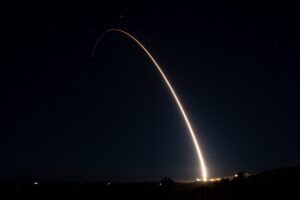
The Northrop Grumman [NOC] LGM-35A Sentinel ICBM may have trouble making its planned date for initial operational capability (IOC), U.S. Air Force Secretary Frank Kendall said on Apr. 27. "There was just an adjustment to the [Sentinel] program that [Air Force] Acquisition Executive Andrew Hunter worked with [DoD Acquisition] Undersecretary [Bill] LaPlante," Kendall said on Apr. 27 at a hearing of the House Armed Services Committee in response to a question from Rep. John Garamendi (D-Calif.) for an update on…














